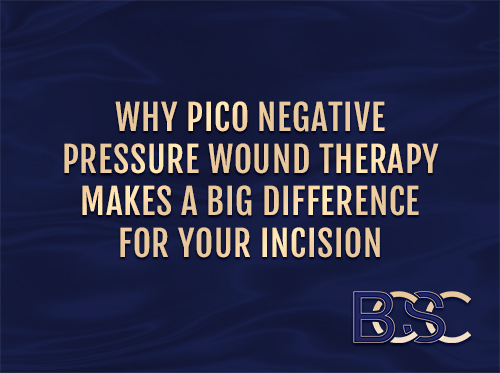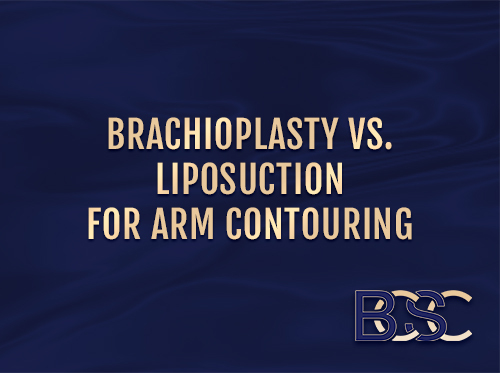Brachioplasty Procedure: What it is, Surgery Prep, Risks, and More
Brachioplasty is a surgical procedure that tightens the upper arm by removing excess skin and fat. If you’re thinking about having arm lift surgery, there are many things you should know first. This article will explain who is a candidate for the surgery, how to prepare, possible risks, and what to expect during the consultation, surgery, and recovery.
Who is the surgery for?
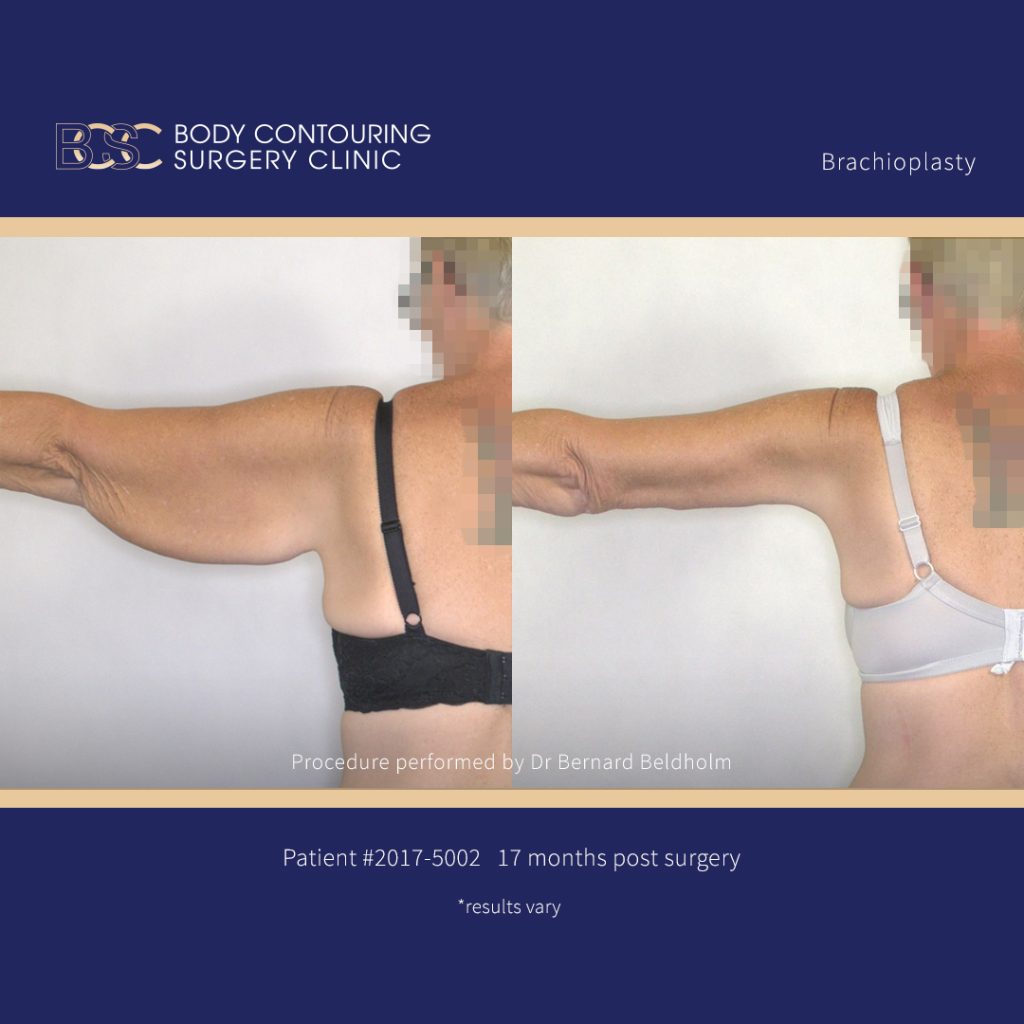
Disclaimer: Adult content, Results vary, seek 2nd opinion, Surgery has risks – See full disclaimer
Arm lift surgery is commonly performed to remove excess skin and fat from the upper arms. These issues commonly occur due to massive weight loss or ageing. Genetics can also play a role. If you have sagging skin and excess fat from your elbow to your armpit, the surgery may be worth considering.
Brachioplasty isn’t right for everyone
To qualify for brachioplasty, massive weight loss patients must have reached and maintained a stable weight for six months or longer. You will need to be in good health and not have any issues that could make surgery risky. You will not be able to undergo upper arm lift surgery if you currently smoke or are pregnant or breastfeeding. Certain medical issues such as diabetes, heart problems, asthma, cancer, obesity, immunodeficiency, etc. may make it too risky to have an upper arm lift operation.
How do you find out if arm lift surgery is right for you?
Thinking about getting an arm lift is one thing. Getting the process started is another. Here are a few steps you can take to get the ball rolling and find out if arm lift surgery is right for you.
Step 1: Get a referral from a GP

Starting on 1 July 2023, patients seeking cosmetic surgery or plastic surgery procedures will first need to speak to a general practitioner (GP) to get a referral. Your GP knows you and your medical history better than anyone. They will also be able to assess you for mental health issues such as body dysmorphia. If they agree that you could be a candidate for upper arm lift surgery or a related cosmetic surgery procedure, they can give you a referral to speak to Dr Beldholm.
Many patients considering arm lift surgery in Newcastle have loose skin after significant weight loss. If you are a massive weight loss patient, your GP can help guide you in your efforts to reach a healthy weight. If you have sagging arm skin after you have met your weight loss goals, then brachioplasty may be the next step.
Step 2: Book a consultation with a surgeon
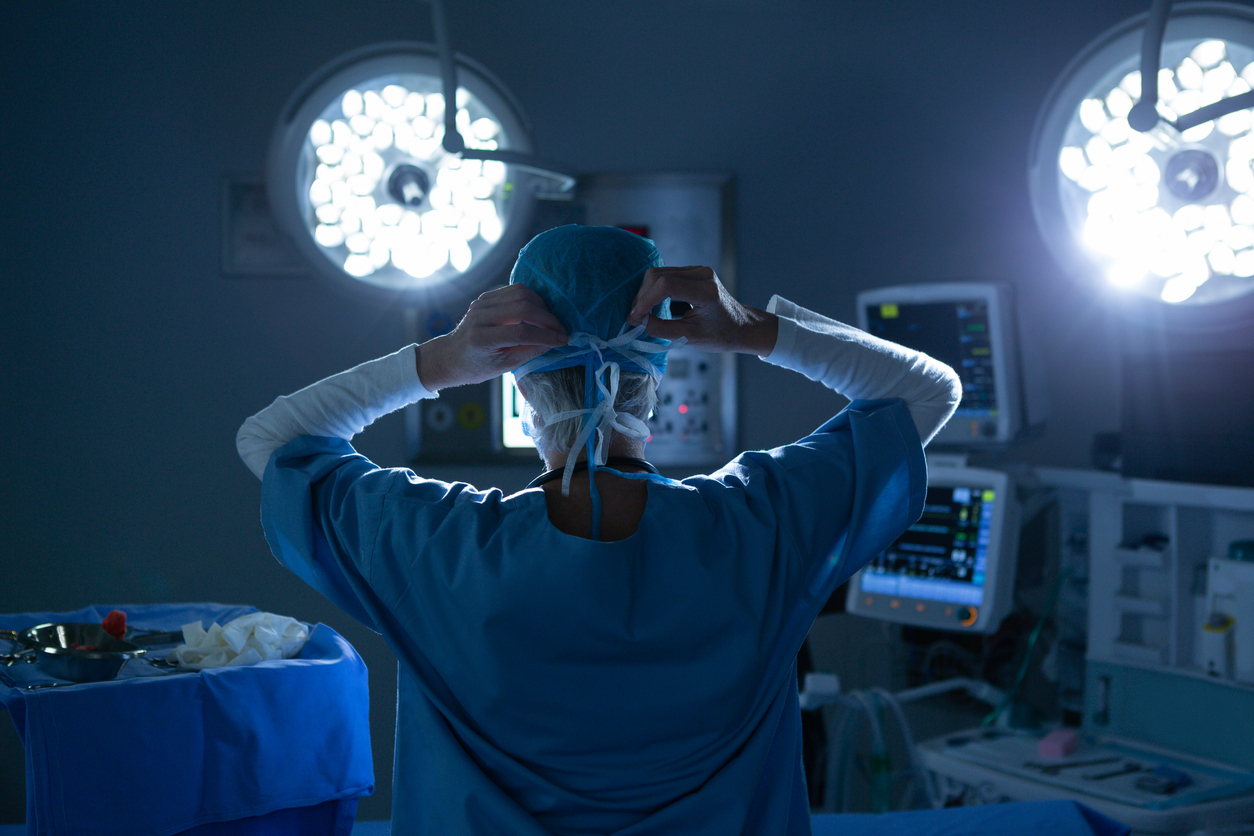
The next step is booking a consultation with a surgeon that specialises in body contouring. Dr Bernard Beldholm, FRACS has dedicated his life to serving men and women in need of excess skin removal after weight loss and pregnancy. He is fellowship-trained.
More than an experienced surgeon, he cares for each patient as though they were family. During your consultation, he will listen carefully to understand your goals and explain your surgical options in detail.
Receiving Your Price Quote

After you return home from your consultation , you will receive a price quote by email. In the email, his patient coordinator will let you know a precise figure for his surgeon fee. Dr Beldholm does not charge a fixed rate since every patient is different. Pricing for his brachioplasty surgical fee starts at $6,490.
The complexity of the surgical technique needed to remove the skin excess can affect pricing. Some patients require more extensive surgery to correct excess tissue than others for various reasons. For example, if you have loose skin on your arms that extends down onto the side of your chest, you may need a more extensive operation than someone that has minimal excess skin on lateral chest.
Our patient coordinator will also request quotes from the Hospital & Anaesthetist. Please note that these charges are billed separately from his surgeon fee. The price for the hospital stay and general anaesthesia can vary based on how long Dr Beldholm recommends you stay in the hospital (typically, one night in the hospital is required), the region of the hospital, and how many hours your arm surgery is expected to take. Generally speaking, the more sagging skin and fat removed, the longer the operation.
You will have a chance to review the emailed price quote at your leisure. Since body contouring surgery can be costly, you are encouraged to talk it over with your loved ones before making a decision.
Learning About Risks and Complications

The cost of arm lift surgery is not the only factor you will have to consider. Every surgical procedure has risks. Serious complications from cosmetic, plastic, and reconstructive surgery are rare in the hands of a competent surgeon. However, even the most skilful surgeon cannot eliminate all risks. During your consultation, Dr Beldholm will tell you about the arm lift surgery risks and the complications that are possible.
Some possible risks of elective surgery may include:
- Infection
- Wound edge separating
- Delayed recovery
- Pain that lasts longer than expected
- Nerve damage
- Bruising
- Skin necrosis
- Blood collections (haematoma)
- Fluid build-up at the wound site (seroma)
- Sutures spitting out
- Asymmetry
- Scar length longer than expected
- Poor scarring (hypertrophic scars, etc.) that requires a scar revision surgery
- Difficulty waking up from anaesthesia
- Nausea from anaesthesia
- Blood clots and pulmonary embolism
- Dissatisfaction with the results
- Excessive bleeding
- Adverse reaction to medications, including allergic reactions
- And more.
The most common complications are minor ones that can be easily treated. However, you’ll need to consider the reality that serious complications are possible, even though they are rare.
Dr Beldholm will review your medical history carefully to ensure you are an appropriate candidate. A preoperative assessment won’t eliminate all risks. It simply means there is potentially less chance of something going wrong compared to a high-risk patient.
What does Dr Beldholm do to minimise risks and complications?
Dr Beldholm and his staff make every effort to perform brachioplasty as safely as possible. All surgery takes place at an accredited private hospital. A licensed anaesthetist will watch over you the whole time. Strict safety and sanitation measures are in place to minimise the risk of contamination.
Dr Beldholm also offers 12 months of follow-up care after the surgery to ensure his patients are healing as expected. To avoid an increased risk of complications, be sure to follow all pre-surgical and aftercare instructions carefully.
Signing a Consent Form
Before booking your arm skin removal surgery, he will review these risks with you. His office will also provide you with a consent form listing all the risks. Please read it carefully and let him know if you have any questions. You will need to sign a consent form acknowledging that you have been advised of these risks. Only then can you book your surgery.
Preparing for Brachioplasty Surgery
Dr Beldholm will provide you with pre-surgical instructions. Here is a quick list of what you will need to do to prepare.
- Book your surgery date.
- Request time off of work.
- Shop for groceries and prepare meals in advance.
- Complete any lab work requested by your surgeon.
- Plan for someone to drive you to and from the surgical center.
- Pack a bag since you may spend one or more nights in the hospital.
- Stop taking NSAID medications, herbal supplements, and blood thinners.
The day of surgery
Dr Beldholm can perform arm lift surgery at Hunter Valley Private Hospital, Maitland Private Hospital, Waratah Private Hospital (Sydney), or the private hospital in Canberra. You can choose the arm lift surgical plan, operative site, date, and time that works for you.
You will need a ride to the hospital. Make sure to bring your ID card, and plan on staying overnight. Dr Beldholm may suggest additional nights in the hospital in some cases. He will let you know well in advance so you can prepare accordingly.
What to expect when you arrive at the hospital
When you arrive at the hospital, you will:
- Check in at the reception desk.
- Go to the admissions area to sign in and show your ID.
- Change into a surgical gown.
- Secure your personal items.
- Have your vitals checked by a nurse.
- Meet your anaesthetist in the anaesthetic bay.
- Plan your incisions and scar placement with Dr Beldholm.
- Go over any last-minute questions you might have.
Arm Lift Operation Steps
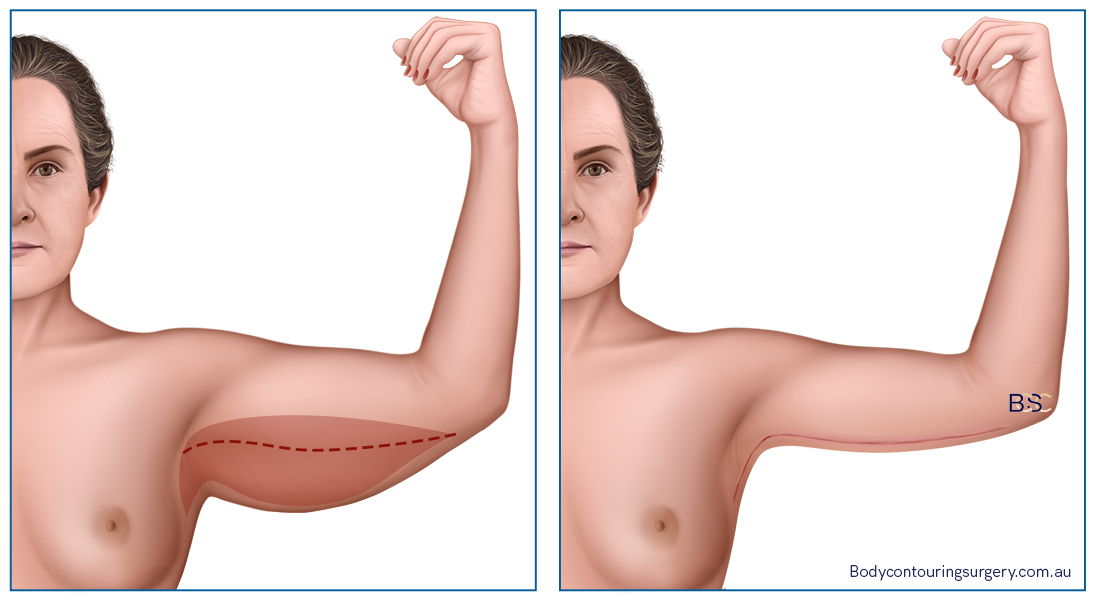
This is a review of what happens during arm lift surgery.
- First, Dr Beldholm will use a marker to plan the arm lift incisions.
- Then you will lie down and go under general anesthesia.
- Your arms will be placed on arm boards.
- Next, Dr Beldholm will inject tumescent solution and perform VASER liposuction to remove excess adipose tissue.
- Then he makes an incision on the inner arm skin, typically from the elbow to the armpit.
- He performs the skin resection, removing the excess tissue and subcutaneous fat.
- After removing the excess tissue and excess fat, he closes the incision.
- Dr Beldholm repeats the process to remove the skin and subcutaneous fat from the other arm.
Brachioplasty Recovery
Dr Beldholm’s office will provide detailed instructions for a successful recovery. Here is what most patients can expect as they heal from arm lift surgery.
Hospital Stay

Most of Dr Beldholm’s arm lift patients spend at least one night in the hospital. A friend or family member will need to drive you home once you are discharged from the surgical facility.
Temporary Side Effects
Immediately after surgery, expect some soreness, discomfort, and swelling in your arms. Bruising, tingling, and numbness are also common. Your hands may feel like boxing gloves due to the swelling. These are typical side effects of arm lift surgery, but if you notice any unusual changes or signs of infection, do not hesitate to contact Dr Beldholm. He is dedicated to providing top-notch aftercare for the first 12 months after he performs arm lift surgery.
Drainage Tubes

Dr Beldholm does not generally use drains for his brachioplasty operations. However, you may sometimes require wearing drains for a short time after the operation. A drain is a thin tube that is inserted into the skin. Drains help to draw out excess fluid from the wound after surgery. This helps to lower the risk of complications like seroma, a clear-yellowish fluid buildup. You may need to wear the drains for a day or longer. Dr Beldholm will remove the drains from your arms during one of your follow-up appointments.
Compression Garment
After arm lift surgery, your arms and hands will be quite swollen. To ease these side effects, Dr Beldholm will ask you to wear a compression garment around your arms. Compression garments are made of a thick, stretchy fabric that applies pressure to the wound. The purpose of this is to reduce swelling and discomfort. Gentle compression may also help the skin and underlying tissues of the inner arm to adhere together better as they heal.
PICO Wound Dressing

Smith & Nephew Pico 14 Negative Pressure Wound Therapy Dressing, Each – All Sizes
In addition to the compression garment, Dr Beldholm will also place a PICO dressing on each of your arms. The PICO dressing is a soft bandage that applies negative pressure to the wound. It has a battery pack attached to it, so you will need to be careful when you begin showering a day or two after your arm lift surgery since the PICO dressing can’t get wet. Taking quick bird baths is the way to go until Dr Beldholm removes the PICO dressing seven to nine days after your operation. At that point, he will replace the PICO dressing with Hypafix tape, which can get wet.
Downtime and Physical Activity

Early in your recovery, you may not be able to do all the things you are used to doing. You will likely need help doing everyday tasks like changing clothes and preparing food when you go home.
Dr Beldholm will ask you to avoid heavy lifting and strenuous exercise for approximately four weeks. You may be able to start driving again and return to work two to three weeks after your operation, assuming you are healing as expected.
Within one to three months, you should be able to resume most of your daily activities, including vigorous exercise and jogging. Dr Beldholm will continue to follow up with you at regular intervals to monitor your progress as you heal.
Brachioplasty Results
The goal of brachioplasty is to create defined upper arms with tighter, firmer-looking skin. Most arm lift patients begin to see their results within three to six months as the swelling goes down. You should wait up to a year to assess your final outcome. During this time, the scar will mature and the underlying skin and supportive fatty tissue should relax, revealing the final arm shape.
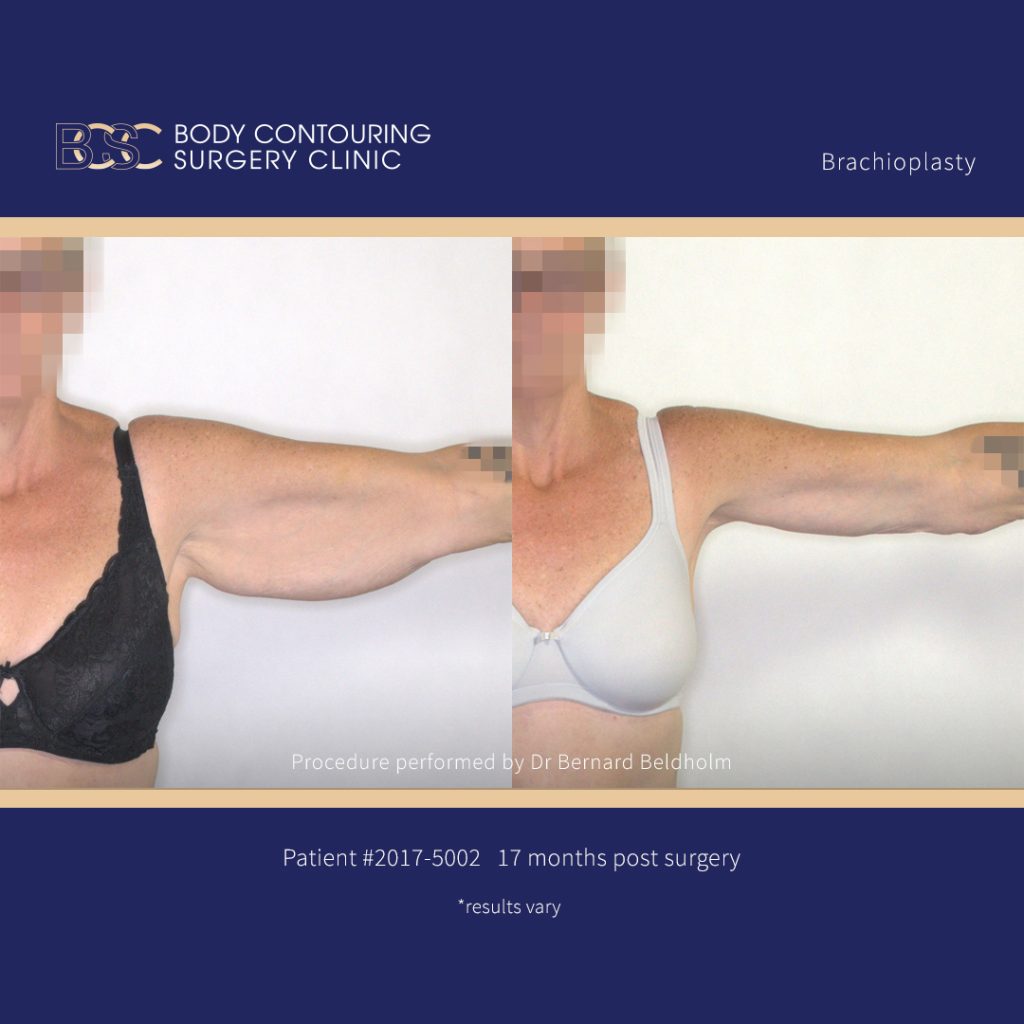
Disclaimer: Adult content, Results vary, seek 2nd opinion, Surgery has risks – See full disclaimer
Maintenance Expectations
To maintain arm lift results for as long as possible, patients must avoid gaining weight. Weight fluctuations can cause excess skin and fat to return. Brachioplasty will not stop the ageing process. As you get older, some excess skin and laxity may recur. However, as long as you maintain a stable weight and follows your surgeon’s aftercare instructions, your arms should continue to look toned and svelte for many years to come.

